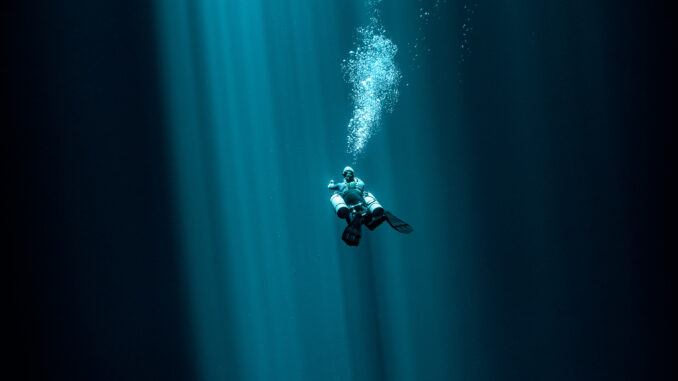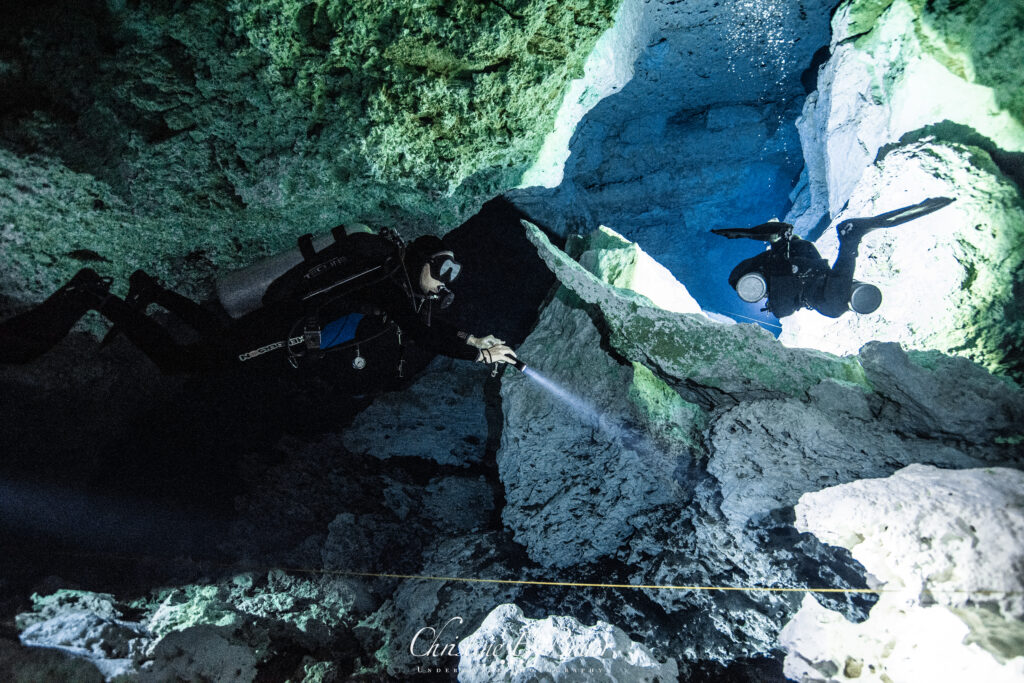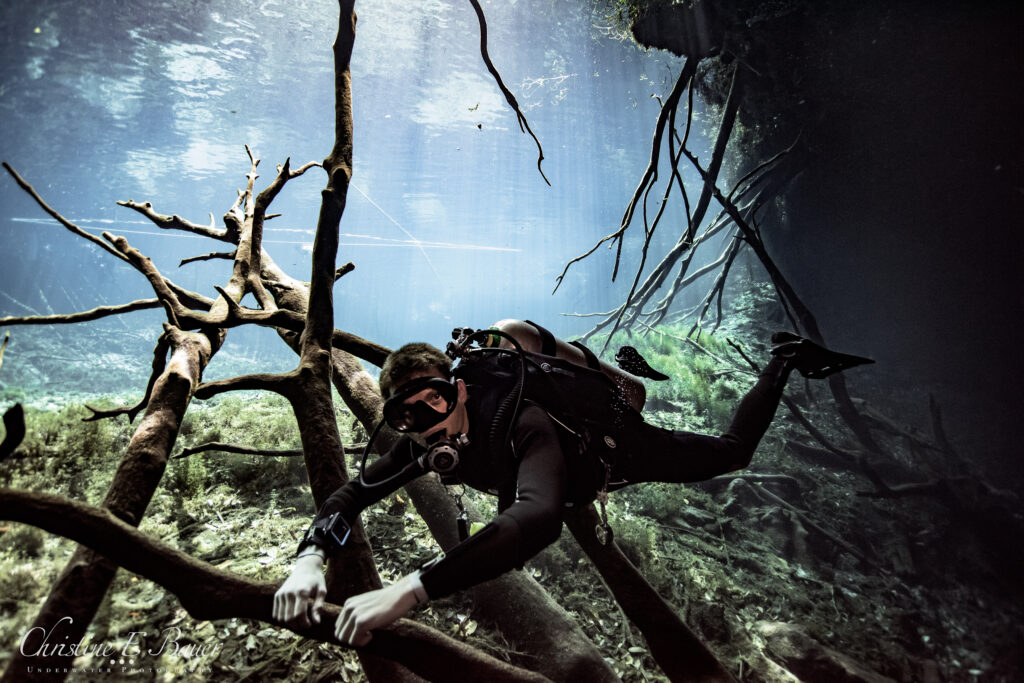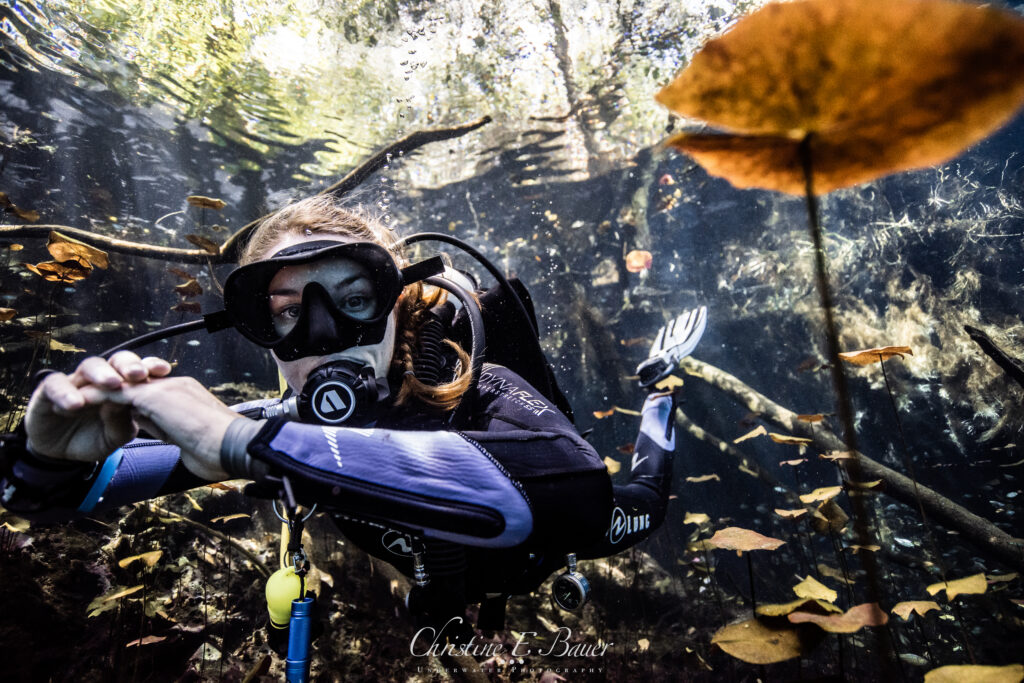
The 7 Best Cenotes for Scuba Diving Near Playa Del Carmen
Those familiar with the Riviera Maya recognize the enchanting allure of its cenotes, among the most breathtaking features of our locale. These remarkable sinkholes captivate tourists, locals, and the Maya people alike, with their natural splendor.
Many of you have likely enjoyed a swim or a snorkel in these cenotes. But did you know that they also offer exhilarating opportunities for scuba diving? Adventurous divers can explore the cavern areas, immersing themselves in an unparalleled underwater experience.
Are you up for the adventure? Let us show you the best cenotes for scuba diving on the Riviera Maya.
Understanding Cenotes
Before diving into our list of must-visit cenotes, let’s first delve into the mystery behind these impressive geological formations. Cenotes, derived from the Mayan word “dzonot,” serve as portals to the underground river systems that crisscross the Yucatan Peninsula.
In the Yucatan, we have the largest underwater river systems in the world. The Sac Actun system, located in the Riviera Maya, connects some of the most well-known cenotes in the area, including Gran Cenote and Cenote Dos Ojos.
These freshwater sinkholes, formed by the collapse of limestone bedrock, reveal a hidden world of caverns adorned with stalactites and stalagmites. While some cenotes offer open-air swimming and snorkeling experiences, others boast cavernous chambers that beckon scuba divers to explore their depths.
Scuba Diving in the Cenotes
Cenote dives, also referred to as cavern or cave dives, take place in overhead environments where direct ascent to the surface may not be possible, unlike open water dives in the ocean. Strict rules govern cavern diving, and all dives must be conducted with a well-trained guide.
The cavern area of a cenote is defined by its ability to receive direct sunlight from the cave entrance. Once beyond this point and unable to see any natural light, you are considered to be within the cave. Cave diving requires even more rigorous technical training.
During cavern diving, divers must stay within 200 linear feet (60 meters) of the cave entrance and avoid restrictive passages where two divers cannot pass simultaneously. Caverns mentioned in this blog are considered safe, with planned guidelines leading through large chambers adorned with stalactites and stalagmites.
Cavern divers carry flashlights to illuminate the cave as they navigate through it. They also follow specific diving procedures, such as adhering to the rule of thirds for air consumption and diving in a single-file line formation.
For cenote dives, you need to have at least an Open Water Certification, be over 15 years of age, and recent experience of ocean diving with most reputable dive operators.
7 Best Cenotes for Scuba Diving
- Cenote Dos Ojos
Named “two eyes” for its distinctive shape, Cenote Dos Ojos offers two mesmerizing dive routes: the ‘Barbie line’ and the ‘Bat Cave’. Its cavernous formations and close access-points to the cave entrance, with many areas to surface, make it beginner-friendly. Inside it showcases a stunning array of stalactites and stalagmites illuminated by ethereal light.
The crystal-clear turquoise waters add to its beauty, making it a must-visit for divers. Plus, if you have non-divers within your group, they can still visit this cenote with you and enjoy snorkeling through the open cavern area too.
- Cenote Garden of Eden
True to its name, Garden of Eden is a paradise for divers. While it lacks the intricate structures of some cenotes, its wide-open cavern and spectacular light show from the light that rushes through from the adjoining Cenote Coral make it another great dive.
Here you’ll have the surreal experience of swimming through the halocline, where water temperatures and visibility play tricks on your senses.
- Cenote Tajma Ha
Dive through three interconnected cenotes: Tajma Ha, Cenote Sugarbowl, and Cenote Esmerelda. Here, you’ll marvel at the stalactites and experience the halocline as you navigate through tunnels and air domes.
This stunning cenote bears a name reminiscent of the Taj Mahal, cleverly incorporating the Mayan word for water, “ha.” This playful wordplay reflects the cenotes natural beauty.

- Casa Cenote
Located closer to the ocean, Casa Cenote is unique as it contains a saltier mix of brackish water within its pool area and a more diverse marine life than the other cenotes.
With its shallow depths and expansive open area, this cenote can be used for open water training, or non-divers can also come along for a leisurely snorkel. Be sure to keep an eye out for Pancho, the resident crocodile, as you explore!
- Cenote Carwash
Despite its unconventional name, Cenote Carwash holds a fascinating history. In the past, this cenote served as a spot where taxi drivers from Tulum would wash their cars!
Here you can dive into its tranquil waters adorned with water lilies and discover hidden speleothems in its cavern zone. When the seasons change and after tropical downpours, the water changes through a kaleidoscope of colors. It’s beautiful to see!

- The Pit
Aptly named for its deep vertical walls, The Pit is a cenote that provides an unforgettable diving experience. As one of the deepest cenotes in the region, it reaches depths of around 40 meters, making it only suitable for advanced divers.
With crystal-clear waters and impressive geological formations, it boasts unique features such as halocline layers and a laser light show that illuminates the entire water column on sunny days.
- Chac Mool Cenote
Cenote Chac Mool, part of an underwater connected system with Cenote Kukulkan and Little Brother, offers captivating diving experiences in the Riviera Maya. It’s the cenote that ‘has it all’ and is a good option if you only have time for one cenote diving day during your Riviera Maya vacation.
Known for its stunning laser light show and unique features like halocline layers, air dome and intricate rock formations, it attracts both beginners and experienced divers alike.
Cenote Diving Tips & Advice
As with all diving excursions, safety needs to be your top priority, so choose the dive shop you go with very carefully. Always check the reviews for the dive shops you choose on reputable websites such as Google and TripAdvisor.
The water in cenotes is cold! It usually stays at around 26°C year-round, and due to this, you will need a wetsuit to dive. All dive shops should have wetsuits for you as part of their rental equipment, but you may want to consider wearing an additional rash guard or a thicker wetsuit if you get cold easily.
Be aware that some dive shops may require you to complete an ocean dive with them before going to the cenotes. This is purely to check that you have adequate buoyancy to swim carefully through the caverns. Let’s not forget that these caverns are made up of stalactites and stalagmites that are millions of years old, and we don’t want to ruin them by having divers bash into them.
Cenote diving can be done even on days when the weather isn’t so great. There are times of the year when the harbor may be closed to boats due to excessive wind and other regulations, but the cenotes are almost always open to divers, making the Riviera Maya a much-loved diving destination for this reason.

Go Cenote Diving in Playa del Carmen with DivePoint Mexico
Cenote diving near Playa Del Carmen offers a thrilling adventure for divers of all skill levels and makes a nice change from being in the ocean! But you need to be mindful to choose a reputable dive shop.
DivePoint Mexico is a well-loved and trusted scuba diving operator, based in Playa del Carmen. They practice responsible diving techniques, have caring and supportive instructors, and well-maintained rental equipment. All the things you need to look for when choosing an instructor to take you diving!
Whether you’re marveling at the intricate formations of Dos Ojos or navigating the serene waters of Casa Cenote, you can really enjoy a special dive that can’t be found anywhere else on the planet!



Be the first to comment